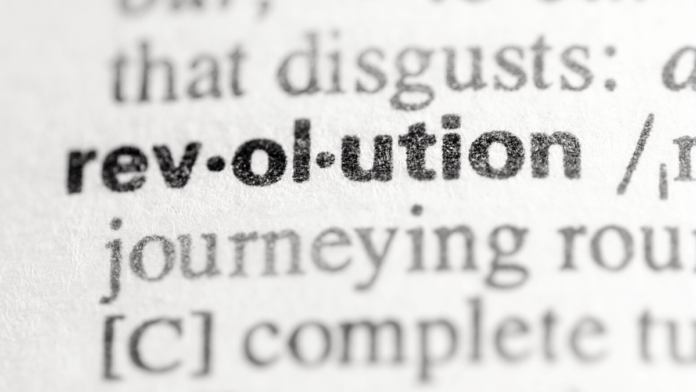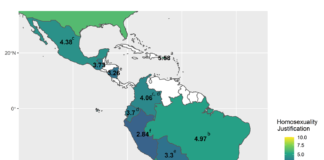
Moral change requires regime change. The nature of authority demands it. Today we are experiencing moral revolution and realignment at a rate perhaps never before seen in human history. All around us, the landscape is in flux, as revolution continues its long march through the institutions.
With such change, the facade of consensus that seems to be erected so quickly around fad moralizing can be extremely disorienting. Whether having to do with something as trivial as the benefits of a new superfood, or as serious as the definition of marriage, when yesterday’s conventional wisdom is today regarded as outmoded at best or immoral at worst, our sense of compass can quickly get out of whack.
When certainty abounds and one finds oneself holding an old position against the new majority, the thought can creep into one’s head, “Do I have this wrong? How can everyone else see it so clearly?” This landscape has pushed some in society toward epistemic catastrophe as they come face-to-face with a massive crisis of truth and authority. Who or what can we trust?
This is a particularly vexing question when it comes to authorities caught straddling two moral visions due to a change in their own publicly-stated positions. Of course, when their new position happens to be smack-dab in the center of the emerging consensus, one can be forgiven for questioning their motives. The intellectual gymnastics one has to perform to remain in a position of credibility after becoming more progressive on a moral question are often excruciating to watch. But when this shift happens in a prominent politician or Christian leader, some are left wondering if they might need to make the same judgment in order to maintain integrity and consistency.
The Ten-Year Test
How can we keep our bearings in such a landscape? I think one useful tool available is what we might call the ten-year test. Of course, this test doesn’t have to be limited to a decade — in fact one may find that the longer the period of time, the more striking and reorienting the exercise can be. Here’s the test. Take any issue in flux today and ask what the consensus was ten years ago. This test can be applied to any individual thinker, within a particular community, or to society as a whole.
Obama on Gay Marriage
Take, for example, the issue of gay marriage. Today, gay marriage enjoys a rather comfortable majority support. But ten years ago? In 2011, President Barack Obama was still publicly on record defending traditional marriage against the legalization of gay marriage. It wasn’t until May 2012 in the run-up to his reelection that Obama came out in support of gay marriage. Now, as many have noted before, his evolution on gay marriage was an entirely political calculation that was not one-directional. Obama was for gay marriage before he was against it as a presidential candidate. But what we can learn from Obama’s flip-flopping is that he knew he would be unelectable in 2008 — and perhaps even up until 2012 — if he supported gay marriage. In other words, American society as a whole was against gay marriage as short as ten years ago.
Bill Nye on Gender and Sex
With respect to the conversation surrounding gender, sex, and identity, consider the case of Bill Nye the Science Guy. Readers of a certain generation will remember watching his show after school — or perhaps even during school — as he taught kids a variety of pop-science topics. One episode from the show that has come to light in recent years is on the topic of sex chromosomes. Here is a quote from the show:
“I’m a girl. Could have just as easily been a boy, though, ‘cause the probability of becoming a girl is always one in two. See, inside each of our cells are these things called chromosomes, and they control whether we become a boy or a girl. Your mom has two X chromosomes in all of her cells, and your dad has one X and one Y chromosome in each of his cells. Before you’re born, your mom gives you one of her chromosomes, and your dad gives you one of his. Mom always gives you an X, and if dad gives you an X, too, then you become a girl. But if he gives you his Y, then you become a boy.”
Ten years ago, of course, this was standard scientific knowledge. The basic facts of sex science were not only well-known and common-sensical, but we were teaching them to our children in school. In 2017, however — just four years ago — Bill Nye came out with an exculpatory episode called “The Sexual Spectrum.” Here is Nye’s updated scientific opinion:
“The world is wonderfully diverse. As scientists we use the scientific method to try and understand that diversity. That is what is happening with the study of human sex and sexuality. Right now, biologists, sociologists, anthropologists, they all are trying to figure this out. And they are finding out that human sexuality is on a spectrum.”Coinciding with this episode’s release, Netflix, which hosts the old Bill Nye the Science Guy show, deleted the clip that contradicts Nye’s newfound messaging. The timing of Nye’s new position and its overlap with public opinion is all a bit too convenient.
Who to Poll?
The list could go on, and could cover a wide variety of topics. Consider the current conversation about race in America, in which the term “colorblind” has been problematized — a concept Martin Luther King Jr. himself used in his fight for Civil Rights.
The point of this test is not to condemn all changes in one’s thinking. We all believe something today that is different from what we believed when we were younger. Often change is a sign of growth and maturity. But the point of this test is to highlight the sheer rapidity of change that is taking place on a series of fundamental realities that underwrite human existence, and to underscore the unilaterally progressive direction in which the change is headed, undermining the natural family — not a coincidence — and civil society.
We should be particularly concerned when trends within the church are pushing the envelope outside the stream of orthodoxy and the faith once-for-all delivered to the saints. If a new “evangelical” cause polls better with your average unbeliever today than it would with figures from church history, you should at least pause to consider why.
Morality by Majority
In 1 Samuel 15, Saul disobeyed God’s clear Word because he cared too much about the people’s opinion. He confessed as much to the prophet Samuel in 1 Samuel 15:24: “I have sinned, for I have transgressed the commandment of the Lord and your words, because I feared the people and obeyed their voice.” This cannot be an option for the believing church. Samuel could not be more clear about what morality by majority means in his response to Saul in 1 Samuel 15:26: “You have rejected the word of the LORD.”
In Samuel’s denouncement, we find our only source for sure and right moral reasoning: the Word of God. With the ten-year test as a tool and God’s Word as our lamp and path, I hope for the sake of this generation and generations to come that we can stop the moral insanity and regain our ethical bearings. We would do well to stop chasing what’s in vogue and recommit to the fundamentals of the faith in the Word of God. Otherwise, every ten years we’ll be refuting ourselves all over again.








